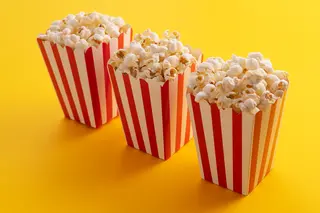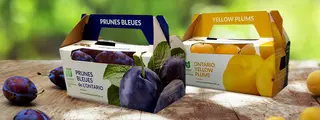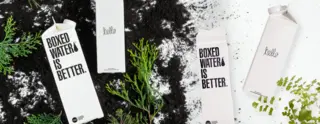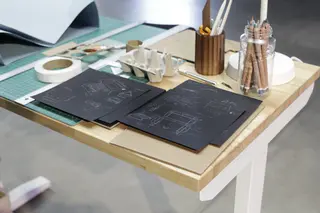
It’s National Popcorn Day so let’s celebrate! After all, Americans consume more than 14 billion quarts annually, that is about 43 quarts per man, woman and child in the country. It is safe to say the love affair we have with popcorn is strong. According to The Popcorn Institute, of those 14 billion quarts, 30% is eaten outside the home, at fairs, stadiums and often, movie theaters.
We even may have had it at the first Thanksgiving, along with the turkey and sweet potatoes. But it is the modern love affair with popcorn and the movies we want to focus on.
National Popcorn Day comes at just the right time of the year, with award season underway and a winter chill in the air. Why not celebrate National Popcorn Day with a movie night in? And snuggle up with your favorite movie-going companion - a big bucket of popcorn.
But how did popcorn, and its eponymous cardboard bucket, become such a cinematic tradition?
According to a story in Slate, quoting from Andrew F. Smith’s “Popped Culture,” popcorn was a popular snack sold by vendors at the turn of the 20th century on the street as well as at fairs and carnivals. But it was not until the Great Depression that movie theaters were pressured into popping this particular treat into their establishments.
During the 1920s, a combination of the introduction and the dawn of talkies, movie theater owners gave up trying to make the movie going experience sophisticated, according to Mental Floss. And they did not think popcorn was sophisticated. But the crash of 1929 changed all that. Any business was good business. And vendors selling popcorn outside movie theaters were making good business. Not letting a good idea pass them by, the theaters brought popcorn into their establishments.
It worked. The cost of popcorn was inexpensive for the owners and the profit margin was good. According to The Popcorn Board, “A major reason for this increase was the introduction of popcorn into movie theaters and its low cost for both patron and owner.” It has remained one of the business’ most profitable concessionary snacks.
But where did the popcorn buckets come from? Street vendors, and later theater owners, primarily sold popcorn in paper bags, but at some point, though the date is in question, theater owners began to introduce a cardboard bucket. Most likely to cut down on the noise pollution created by the crackling sound of the patron’s hands repeatedly reaching into the bags. Perhaps a clue as to why you will not find bags of chips in most theater concession stands.
In recent history, popcorn packaging is still seeing an evolution. In 2015, Danish supermarket COOP, created a popcorn bag made of only bio-based, cellulose fibers and paper, removing the need for harmful chemicals.
You can also celebrate with your very own cardboard popcorn box or bucket. Online there are myriad templates available to craft your own.
It’s the perfect time to make a date with a film and a favorite bucket-filled snack to celebrate National Popcorn Day!



